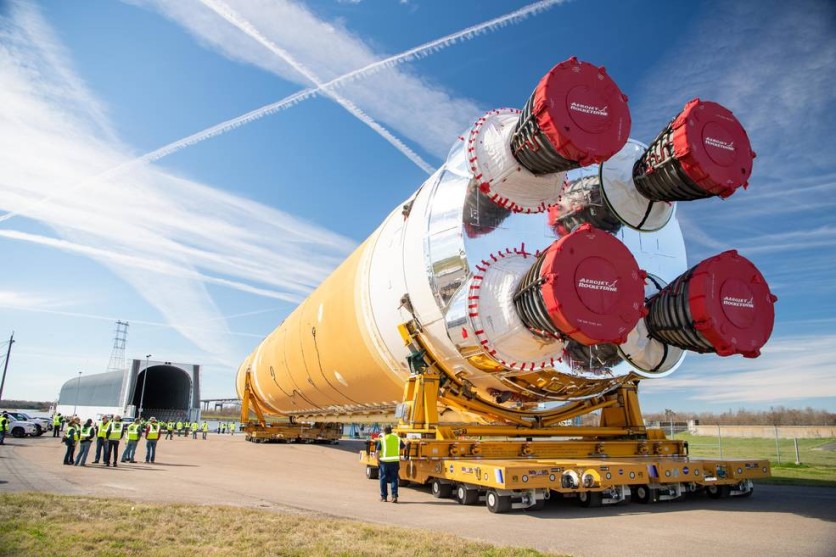Taking more humans to space can be quite tricky and expensive to achieve.
This is the reason why only several qualified astronauts can visit and have space exploration that is mainly authorized by the U.S. National Aeronautics and Space Administration or NASA.
However, NASA seemed to be recently completed a massive rocket project that aims to take more humans to Moon in the following years to come.
Introducing NASA's Artemis Rocket

Through NASA's program called the Space Launch System or SLS, this 'mega-rocket' project of NASA is taller than a 30-story building that was placed, on Wednesday, to a huge barge that will be sent to its next destination for other testings.
The first core stage was made at NASA's Michoud Assembly Facility in New Orleans, Louisiana, that will soon be transferred to Mississippi to undergo other more comprehensive tests before its official launching that is still set in the year 2024.
The SLS is part of NASA's Artemis Program that aims to provide larger rocket in order for more individuals to reach Moon.
As of now, the mega-rocket has to be tested first with more tests, but once these are completed, SLS will soon be termed as the 'most powerful rocket in the world' -- challenging the historic Saturn V rocket that was used by NASA on years between 1967 and 1973.
Once this mega-rocket sets to reach NASA's Stennis Space Center in Mississippi, the core will be filled with more propellant- the one that holds liquid oxygen and another for liquid hydrogen. Together, the combined weight is 733,000 gallons (2.7 million liters) of propellant to power the engines.
It will also soon be ignited with four main engines, such as RS-25 engines that will be fired for about eight minutes or less. This will mimic the engines needed for its official launch in 2024.
These tests are important to see whether the rocket is suitable to cater to more people on Moon explorations. After Mississippi, the rocket will soon be transferred for further tests at Kennedy Space Center in Cape Canaveral, Florida, around July to October.
Within this schedule, the SLS will try its first flight. However, no people will actually be inside the Orion, but it will be tested out to see the performance of the capsule on space.
Better Late Than Never
Back in 2017, NASA has had already been developing this mega-rocket. Back on its first year, NASA announced that they will soon fly this mega-rocket within the month of June 2020, however, due to other complications such as multiple delays and rising costs on its development, NASA seemed to be pushing it more further on the coming years since the development of the said rocket needs to be fully furnished first.
Still, NASA is confident that they will soon finish this project in 2024.
NASA deputy administrator Jim Morhard said that SLS is "an exciting leap forward in the Artemis program as NASA teams make progress toward the launch pad."
As of today, NASA still doesn't have a confirmed schedule of the launching, but it is said to be called 'Artemis 1' that is set to be the next grand event in space exploration.
ALSO READ: Boeing's Starliner CST-100 Fails Docking with Space Station as Planned Following Missed Target Orbit
ⓒ 2025 TECHTIMES.com All rights reserved. Do not reproduce without permission.




